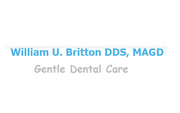
Periodontitis is an advanced form of gum disease. As an infection that attacks and destroys gum tissue, it can penetrate so deeply that it damages the jawbone and leads to tooth loss if left unchecked. Fortunately, periodontitis is treatable. Here’s a closer look at this common condition—half of all Americans over age 30 have periodontitis—and the treatment options that are available.
Symptoms & Diagnosis
Symptoms are generally mild in the earlier stages of gum disease and worsen as it progresses. The gums are often red, puffy, or tender, and they may bleed when you brush or floss. They may start to recede, pulling away from the surface of the teeth and making the teeth appear longer; with less of the gum to grip it, a tooth might loosen or even fall out. Bad breath and an unpleasant taste in the mouth are also common.
 Diagnosing periodontitis involves a comprehensive oral examination. When a person has periodontitis, the gum tissue becomes damaged and forms "pockets" between the teeth.
Diagnosing periodontitis involves a comprehensive oral examination. When a person has periodontitis, the gum tissue becomes damaged and forms "pockets" between the teeth.
A dentist measures the depths of these pockets to determine the severity of the condition; anything deeper than four millimeters is a sign of periodontitis. The dentist may also take X-rays to monitor any particularly deep pockets or to see if bone loss is present.
Nonsurgical Treatments
Nonsurgical treatments for periodontitis typically include scaling, which removes plaque buildup from the teeth and under the gums, and root planing, which levels tooth root surfaces to hinder further bacteria and plaque accumulation. Your dentist might also apply a topical antibiotic to the gums or prescribe an oral antibiotic medication to help manage the infection.
Surgical Treatments
In severe cases of periodontitis, surgical intervention might be needed. Pocket reduction surgery entails making tiny cuts in the gum pockets so they can be more thoroughly cleaned. Soft tissue grafts transfer tissue from the roof of the mouth to the gum line to encourage healthy tissue growth, while bone grafts transfer natural or synthetic bone to damaged bone at the tooth root to help the tooth stay in place.
Another method of growing healthy bone is guided tissue regeneration, in which a small piece of fabric is placed between the tooth and bone to prevent tissue and bacteria from impeding bone growth. A special protein gel can be applied to stimulate healthy tissue growth.
Early intervention is crucial in preventing and addressing gum disease. William U. Britton DDS, MAGD, treats patients throughout the Chillicothe and Jackson, OH, areas. He and his compassionate staff offer a wide variety of dental care services, including gum disease treatment, crowns, root canals, and teeth whitening. Schedule an exam by calling (740) 772-2225 or visit his website to learn more about the practice.
About the Business
Have a question? Ask the experts!
Send your question

